Jon's Blog
Browse Category
- 2025 (3)
- Archive (2008 - 2025) (95)
2010
The Europa Cup series has always been a stable part of my campaign for the Worlds
Christmas in Croatia
The Europa Cup series has always been a stable part of my campaign for the Worlds. As I spend a lot of my time coaching, I take the opportunity to race wherever and whenever I can. The Europa Cup series is cheap to do with a good level of competition at venues all around Europe.
Unfortunately I finished third this year (I won the series in 2008 & 2009) despite counting a 1st (Hungary), 2nd (Switzerland) and 3rd (Netherlands), as I had to count my first event at Hyeres which I competed in shortly after returning from my hamstring injury (so was somewhat out of practice), hence finishing a disappointing 17th after lying top ten until the last race of the regatta, but it is worth mentioning there were 279 Radial sailors taking part.
The Croatian Europa cup was my first international regatta after breaking my right arm. Indeed it was my first regatta on the sea and even my first regatta sailed in more than five knots. So it was a bit of a steep learning curve but it was just great to be back sailing! It was certainly a lot warmer in Hvar than it has been in the UK of late and the Island is a great place to see in the New Year, the Croats really love their fireworks. It also meant I don’t have such a big gap in racing, as the next race in the UK is not until the middle of March!
Day one we had our usual couple of general recalls where I had reasonable starts, but unfortunately on the real start the boat under me got stuck head to wind, ten seconds before the start, hitting me. We then both got stuck together, drifting backwards at pace as the rest of the fleet sailed off up the beat! In a competitive fleet, especially in the shifty and gusty conditions (you miss one shift you lose about 100 metres) it was hard to catch up, but I went from last 16 at the top mark, to top 16 at the finish.
The second race I also had a poor start but it is funny how it all comes back. Despite the cold and difficult conditions it was great to be back on the water and racing. A good pull back to fourth put me top ten overall.
Day two and the wind never arrived but actually this was just what my arm needed. After the racing it swelled somewhat and I try to avoid painkilling medication if at all possible, just using rest and ice and some light stretching to try and keep it mobile. So a day off, on shore, was just what I needed!
Day three and in the morning there was even less wind but we launched at midday, and after spending a couple of hours on the water waiting for the wind to increase and stabilise we were rewarded with a single race. Although I was still slow getting off the start line I pulled through to sixth and certainly began to feel more like my old self again.
The last start time for a race on the final day was 2pm so it looked difficult to get more racing in, given the forecast and the fact that after general recalls and moving the marks of the course the actual start the previous day did not get underway until nearly three. However this is the nature of the sport: there is lots of waiting in sailing!
Day four and we once again took to the water so if the wind appeared we could get a race in before the two o’clock cut off. Unfortunately the wind never arrived and after a couple of hours bobbing around on the water we were towed in. Unfortunately this meant I had to count my disappointing first race (16th) as there is no discard with a three race series. It is always a bit disappointing to have fewer races than days of the regatta (we had three races in four days) but some racing is always better than none. Overall I finished sixth (just one point off top five). Fingers crossed for an injury free 2011 with lots of sailing!
I am now home and off for a couple of weeks’ holiday with my parents. My hope is my arm will be good enough after this to take some more loading and my intention is to start doing upper body work at the Weymouth Pilates Centre after the holiday and to start gaining some strength back into the arm. Obviously I lost quite a lot of weight being injured. I also plan to visit Liz, my physiotherapist at the Nielson Clinic, to start moblising the joint now that it is less painful.
I feel I really need a holiday as it has been a bit of a frustrating time waiting for my arm to heal and I can be impatient when I want to get things done. So now is the perfect time for a holiday. We are going to Cornwall for a fortnight with Season’s holidays, spending one week in Burn Park (near Bude) and one week on the Clowance Estate (near St Ives).
Both holidays have been carefully selected because they are quite close to Weymouth (I do enough driving for my job) and both have well equipped gyms so I can do some aerobic exercise while away, speeding my return to fitness. Previously I would just go for a run whilst away, but since the operation on my neck I try and avoid any high impact exercise (like running) wherever I can. Hopefully before too long I will be back on the bike (as this is exactly what I bought it for)…
Sailing fitness - part three
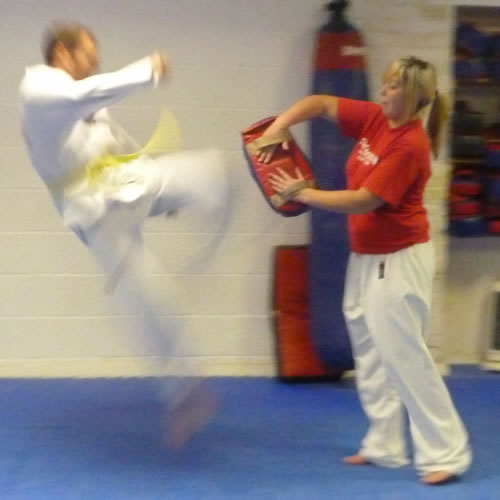
Nearly four months has passed since I broke my elbow. The actual bone was appropriately named Radial head. The nurse said I did a really good job of it (breaking the thickest part of the thickest bone in the forearm) but that was not really much comfort at the time! I wonder if the slow rate of recovery is related to the fact I tried to get through the pain and doing a full day’s coaching before I realised how just how bad the injury was (after all when I first started 49er sailing I seemed to be routinely thrown against the mast at 20 miles an hour so I am used to a bit of pain!)
Although it could be because I recently stopped eating dairy after discovering that I was lactose intolerant (previously I thought it was perfectly normal to have a little bit of wind first thing in the morning after having your milk and cereal!) Whatever the case there is still plenty of time for me to be back to fitness for the World Qualifiers in March, so hopefully my patience in not returning to exercise too early will be rewarded.
In the meantime I am working very hard: stretching every day and seeing the physiotherapist twice a week (when she is not snowed in). I have now had my last hospital visit and although the arm is far from fully healed it has now got to the stage where it is very likely to re-break. I have also been having regular acupuncture on the injury which I feel has really helped.
I managed to avoid having my arm pinned (a 2mm disassociation is border line for compulsory surgery). So although pinning would have speeded up the healing it would have most likely meant a stiffer elbow – something I really wanted to avoid. So now I just have a small “step” in the joint (you can see the break where the bone has been pushed out and down) but no more bits of metal in me (two is more than enough!)
The good news is I am going to try sailing again next week (weather permitting). This has been the longest time I have had out of a boat for several years, so I am really looking forward to it although perhaps this time of year it would be a bit more fun if it were in Australia or somewhere else slightly warmer! However I won’t be getting back on the bike in the near future. I managed to fall over just walking down the street the other day, so I am not risking getting back in the saddle quite yet!
What I have been doing is going to the gym and using the stationary bike to do some aerobic work and get some of the injury fat off my body, so I can see my abdominal muscles again! It is certainly not the most exciting thing to be doing but it is all part of my preparation for getting back into shape for next year. I have been using a Polar heart rate monitor for this, which I have found absolutely invaluable in ensuring I am training at exactly the right intensity for exactly the right time. After all when you are limited to what you can do it would be very easy to over train on what you can do!
The one thing I have been able to get back doing is Taekwondo, although obviously I am not doing any press ups or punches but there is nothing stopping me kicking. This means I am now able to start improving my flexibility again and it is also a good explosive workout although I don’t wear my Polar heart rate monitor just in case it got kicked. Fingers crossed if I work hard I should be able to get my second belt next year!
Sailing fitness - part two
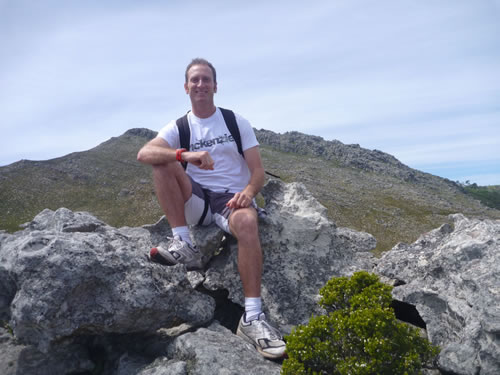
Well it is now over two months since I broke my arm falling off my bike. The main reason for my getting a bike was so that I did not have to spend so much time on a stationary bike at the gym which is exactly what I have been doing recently. Despite a painful and expensive accident I really am very keen to get back on the bike and I hope to do so in the near future.
To make the most of my time (there is very little you can do with a broken arm) I have been putting together some training videos which you can find on my website www.jonemmettsailing.co.uk (in the videos section of Media)I have also been writing several articles which will come out in due course.
One of the most important things is to make sure you take a break (no, not breaking a limb, this is not to be advised, but a break from work… a holiday). The one problem I have is every time I have a break I come back in poor shape and it takes a long time to get fit again. I have been doing lots of work with Jen at the Pilates Centre Weymouth, and I really notice how tight I get when I do not train with her.
Steve Jordan at Cape Active runs what for me was the perfect holiday. Very active (I got to climb up some mountains – although this is perhaps not to be recommended with a broken arm as sometimes I found it very difficult to get back down again!) as well as a proper holiday. I got to see whales so close they got me wet, stroke a cheetah and every day I got to see wild baboons. I even shared a watering hole with them, at the top of a mountain. The youngsters were quite inquisitive but the adults made a bit of noise if we got too close.
I also got to carry on doing Pilates every day which meant when I came back I was definitely in better shape than when I went. (There is not even any jet lag from South Africa). It was however slightly frustrating that I could not do everything I wanted because of my arm but as always time heals.
Although I missed all the Autumn Qualifiers I did manage to compete in the Radial Inlands, mostly down to a very light wind forecast. It was fantastic to finish the season on a high, winning the event for the tenth time. Although my arm really ached on the way home, that was probably more from lifting trolleys and pulling my boat up the slipway!!!
Sailing fitness - part one
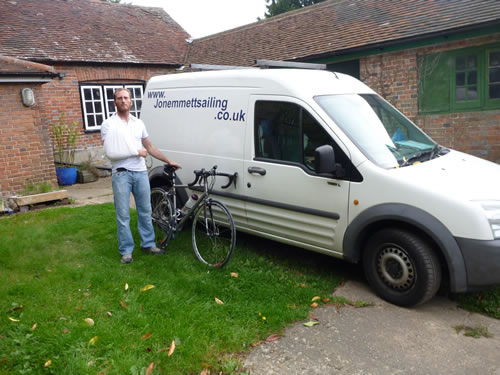
Fitness is of course a very important part of sailing and as the build up to 2012 gets closer and closer the demand for my coaching is on the increase. So I decided to get a road bike so that I could do some training whilst I am away coaching.
I made the short trip from Weymouth where I live (and also where the next Olympic games will be sailed) to Tri UK in Yeovil to look at some bikes. I was amazed with the range they had and the expertise of the staff. After looking over the bikes I was fitted, and unfortunately they did not have one in exactly my size (I was very impressed as I would not have known the difference and they could have sold me one slightly too small and I would never have known) so they had to wait to get some stock in.
Fortunately my bike arrived just in time for me to pick it up before heading off to coach at the Master Worlds, meaning I would have a quick way of getting to and from the club, and also would do some fitness work rather than simply spend all week in the RIB.
Unfortunately on the morning of the first race I decided to fall off my new bike onto the concrete and I was surprised at just how much this hurt! However I expected the pain to go away but far from it, the pain got worse and worse and my arm stiffened to the point that it would no longer move.
After a brief chat to a First Aid first responder, and much to my embarrassment, they immediately sent for an ambulance and put me in the back and asked to me describe the pain which I said was 6/7 but 10 if you tried to move my arm! They then put me on “gas and air” or entenox like they give pregnant ladies… The effect was not really to take the pain away but more that I did not care about it so much any more. The gas also made me rather giggly and chatty… a similar affect to having ten pints but in about ten seconds.
Upon reaching the hospital the X-ray confirmed that I had broken my radial head (the large bone in the forearm and actually the same injury my Mum had when she fell over in the snow)… I got a taxi home and was then rescued by my parents and brought back to the Farm.
Since then I have been swallowing bucket loads of painkillers (as many as I was allowed), using gallons of Arnica gel and a small iceberg worth of ice to try and keep the swelling down (I think the pink elephant ice cubes were the most effective) whilst only eating meals that I can manage with just my left hand.
At the time of writing I am waiting to see the fracture clinic to learn how long I am going to have to spend out of action and whether conservative treatment (not resorting to surgery) will be sufficient... fingers crossed I won’t need surgery.
The Youth Olympics
This week sees the start of the Youth Olympic games with the sailing being held at the National Sailing Centre Singapore. Sailing has been an Olympic sport since 1900 so it makes sense that there is sailing at the Youth Olympics. This will see the sailing contested in the single handed dinghy the Byte (a class in which I won the World Championships in 2008).
The reason the contest which is for both boys and girls (racing in separate fleets) is being sailed in Bytes rather than in the Laser Radial is the age and size of the sailors. The Youth Olympics is for sailors under 16 (so I guess it could really be called the Junior Olympics) whereas the Youth Worlds (raced in Laser Radials) is for under 19 sailors who will typically be bigger and heavier.
In preparation for this event I have coached the representative from Norway, Germany, Bermuda and Ireland to mention a few. A photo album of the last training camp I ran may be found here.
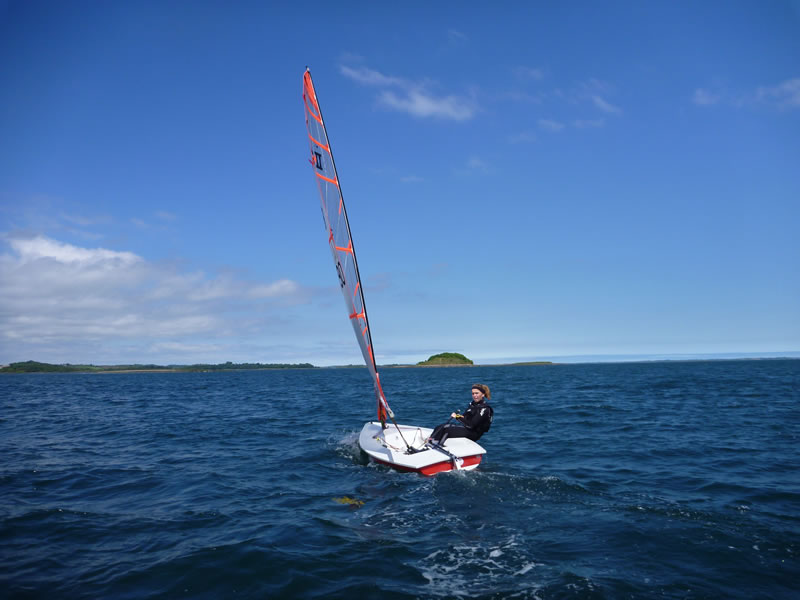
The Radial Worlds
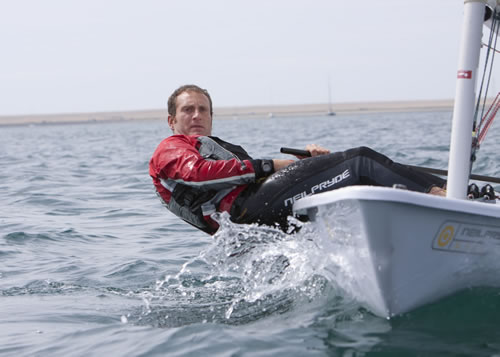
My preparation for the Radial Worlds in Largs was all held in light winds. In fact the last major event I did was the Dutch Europa cup where we managed to complete only three races in four days, and the wind was so light on the final day that you could not sail upwind and instead I opted to sail to the nearest beach where I got rescued by a RIB.
I took every opportunity to go out in the last few weeks before the Worlds but the wind always seemed to be very light and of course sailing in Portland Harbour the water was also very flat. However I got out every day that I could even if it was only for an hour.
The last regatta I did was the Laser Performance World Open which was also all held in under 5 knots. I thought it was a great event with a good social in the evening (even if I did hurt my hand as well as my pride falling off the bucking bronco, and taking all the skin off my elbow on the bouncy castle – fun and games can be dangerous). What I particularly enjoyed was having the whole Laser family there (all the boats manufactured by Laser Performance), even if the timing was not ideal, the day after my good University friend Iain Reynolds’ wedding to Zoe at Osborne House on the Isle of Wight.
My trip up to Largs was pretty eventful but sensibly I had allowed a whole day to do this which was just as well… Every 50 miles I went north the temperature dropped one degree and the spots of rain started. By the time I got half way my van decided it did not like it and I lost all power. Usually after I had just overtaken a large lorry… So I had to pull over to the hard shoulder and restart my engine only to over take the same lorry and then lose all power again!
The third time this happened I decided I was in trouble. Just then I saw an AA van who I persuaded to pull over but he explained that unfortunately I needed to make an official call. So I pulled up at the next service station and made the call. I was told to expect a two hour wait due to high call volumes so I gave the B&B a call to say I had no idea what time I was going to get there/if I was going to get there… After an hour I had a call from a recovery garage saying can I drive over. They were in the same service station as me but about 300 metres away (I could not see them because they were the other side of a BP garage).
Anyway they stuck a computer into my van and revved the engine like hell for half an hour and said the issue was with a fuel pump and that it was not something they could fix there and then, so I took the chance and continued up to Largs. (I was offered a tow home but this was not really what I wanted to do)… Fortunately I made it (although it was getting late) and my B&B, Broomlodge was walking distance from the Sailing Club so if I broke down I could still make it to my boat. I was actually in the same B&B as Mark Howard an ex Laser Sailor/Coach whom I have been mates with for many years but unfortunately he did not have a car at all, so I ended up giving him lifts!
The first few days of training were windy and I found it hard to get up to speed in the short chop and strong winds, so I was glad to be up early although the thought crossed my mind that if it was going to be like this all week perhaps some rest would be more useful. I had a pre-event massage and measured in without problem, so we were all ready to go.
Day one was strong breeze and a long sail to the starting area but it was well worth the long sail to have steadier breeze. We had four days of round robin (racing in 2 groups of mixed ability) before being split into Gold/Silver (top 50% and bottom 50%) for the final two days.
The first race I tacked off the port end with the eventual race winner but unfortunately as I was playing the sheet the whole of the outhaul handle got drawn into the ratchet block along with the mainsheet… I can honestly say I have been racing Lasers for nearly twenty years and this has never happened before. It certainly made sheeting in and out nearly impossible!
I managed to get to the top mark well inside the top ten but I could not play the mainsheet on the reach, so I just pointed at the next mark and hiked like hell. Down the run I had to sail dead downwind as I could not adjust the mainsheet, whilst I tried to remove the outhaul, much to the amusement of all the boats overtaking me. First I managed to pull it all the way through (now giving me a bar tight outhaul) before finally managing to free it just before the bottom mark. Unfortunately up the next beat the wind shifted about 90 degrees, turning the beat (and the next run) into a reach making overtaking impossible, so I had to settle for a 12th. Not great but still OK. The second fleet, which started later than us had their race abandoned.
The second race was pretty much a carbon copy with a large shift to the right up the final beat. Unfortunately for me this meant that the half dozen or so boats who had got onto starboard early were lifted up to the top mark, which I had now overstood, giving me another 12th and putting me just outside the top twenty overall. No disaster but hardly the consistent start I had wanted.
However day two and a lighter breeze which was shifty but no major shifts saw a 5th and a 4th, putting me just outside the top ten and back in the game as it were.
Day three and the weather took a real turn for the worst with over 30 knots in the morning. We were postponed onshore for several hours before launching in a rapidly dying breeze. A top five result turned into a 13th when the breeze died down the final run. It filled in from the right of the run, but if I sailed over there I would be right in the pack, so I decided the sensible thing was to stay in the middle of the run so when the fleet got level with me downwind I would have a shorter distance to the mark. However the breeze stayed on the right and the whole bunch sailed around me, leaving me a 13th, my worst race of the regatta.
However I was able to make up for this in the next race working my way right, rounding the top mark in second and pulling away from the fleet down the run. Up the next beat the wind continued to die and about 100 metres from the windward mark the race was abandoned and we were all towed in. What a day, 30 knots to 3 knots.
Day four and we once again had strong breeze. In the first race I finished sixth but the wind started to die resulting in several recalls as everyone tried to start by the committee boat. Finally we got away and I was maybe sixth boat down, and one of the first to tack. With the wind shifting further right I managed to get into third up the first beat but once again the race committee decided to abandon. This was the second race which was abandoned whilst I was in the top three.
So going into the finals I was in ninth place, just four points off fifth place and a consistent opening series. The finals is where all the major place changes occur, as now the fleet is twice as hard!
I was raring to go on day five which was once again very light winds and keen to get more races in (currently we had only had six). We took to the water early but at no point was the wind settled enough to race. Finally the abandoned flag was hoisted and we all started to be towed in at four o’clock, only for the wind to fill in from the opposite direction five minutes later. C’est la vie.
Day six and it was back to strong winds… 30 knots plus. So once again no racing and my ninth place stands. A disappointing end but it was the same for everyone and things could have been very different if they had had one final race (which everyone would have had to count) and some people were black flagged, which happened to some sailors in the Women’s World Championships which was being raced at the same time on a race course closer to the club (they got one very light race in on the penultimate day). It retrospect, a top ten position in a World Championship is very respectable, it was just not what I had hoped for.
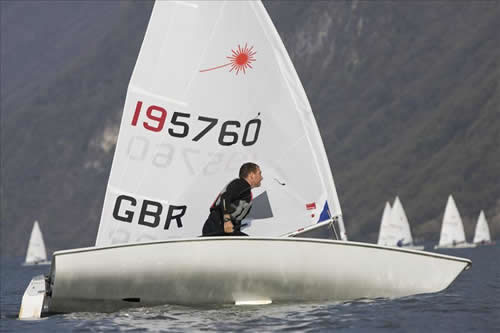
The Europa Cups
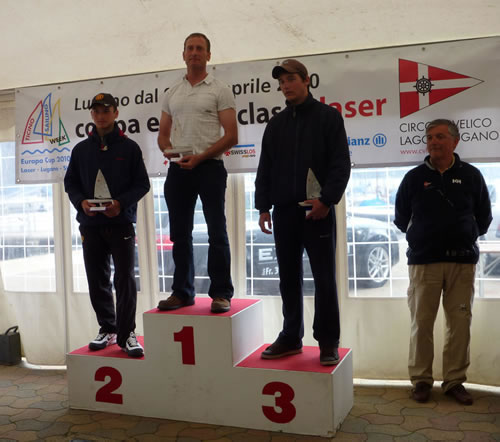
It always amazes me how few of the Brits do the Europa Cup series. The first event of the year in Hyeres had over 280 Radials taking part (plus 99 Standards and 137 4.7s), yet there were fewer than 6 UK sailors taking part. You think the Qualifiers are big, where the Radial fleet has to be split in half, well in Hyeres they had to have four Radial fleets!
This is especially surprising when you consider that Hyeres, which is in the South of France (walking distance – I kid you not – from Toulon airport, which still operates ridiculously cheap Ryan air flights) is such a good place to sail as it is where the first Grade one European regatta (Semaine Olympique Francaise de Voile or SOF) is held each year.
The Europa Cups actually make great warm ups to the World Cup events and although all the events (Europa Cups and World Cup events) are “stand alone” they also form part of the Ladder. There are top prizes with most of the big Europa Cups giving away a free sail for each fleet as well as a free sail for the overall and category series winner.
Some of the Europa Cups are actually probably closer for some people than the Qualifiers. When you travel to Holland (which is shortly before the Holland grade 1 regatta) and Belgium with a boat on the roof or by taking a double trailer, you can get a channel crossing for well under a £100.
When you actually get there the events are always good value with a typical event costing around 70 Euros (it is just a shame that the pound is currently so weak) which will usually include food most nights and a something to take home like a T shirt or cap. The eight race series (2 discards) over three or four days is about right, and a sensible cut off time for the last race means everyone can get started on their way home at a reasonable time.
The timing of events is around school holidays so you can easily do a couple of events together for example Norway and Denmark, or Spain and Portugal with just a few days between them, allowing comfortable travel time but not too much time hanging around. There are a wide range of venues with the open sea, to Lugano in Switzerland, providing lots of different challenges. There are some great venues such as Garda which would be well worth going to even if it were not part of the series.
Overall there are ten events starting in April and ending in December in Hvar (Croatia) on December 31st… this is usually a great party. Although in the early years (whilst there was still a conflict) it was somewhat disconcerting for people to fire guns to welcome in the new year but now thankfully it is just restricted to fireworks!
One of the key things to improve your sailing is to try and get some international experience before your main event of the year, after all there is only one World Championship a year. The Europa Cup series provide a great way to do this and are less competitive than the World Cup events.
One of the key benefits of racing the Laser is that it truly is an international class and by doing the Europa Cup series you have a chance to race against top sailors from other countries not just your own. It is not uncommon to see 20 countries represented at a Europa cup which is more countries than many classes see at the World Championships.
The Qualifiers
There are six Radial Qualifier events a year to decide who goes to the World and European Championships. These events are called Qualifiers because they qualify you to go to the international events. They also form part of the Radial ladder which is effectively the National ranking. You count your best four from the last six events (it is a rolling ladder) so it is often a good idea to do more than the minimum four events, just in case you have a bad event.
On the first day there are three races which start at midday. The entry for the Radials is often very large (over 100 boats) which means that the fleet is split into four groups with each group racing each other once. On the second day the fleet is divided into the top and bottom half (Alpha and Beta) to decide the overall winner. By splitting the fleet it reduces the number of boats on the start line and therefore the likelihood of general recalls.
I have actually been doing the Qs since the early nineties and it is great practice to be able to race against the best people in the country. Even those sailors who are ranked in the top twenty in the World still have to come and do the Qs to get a place for the World and Europeans. It can be somewhat of a shock to the system when you come from regularly winning races in a Junior class to racing in an Olympic class (for women).
This year I made a good start at the first event at Stokes Bay with a win. It was a nice start for me as we raced only on the Sunday with Saturday spent watching the rugby due to light winds. My fitness still needs some work having had such a long time out with injury over the winter, so I was certainly not complaining when we raced only one day.
The next event was at Plymouth where I made a good start, leading the event overnight. Unfortunately on the second day I sailed poorly and managed to snatch defeat from the jaws of victory to finish eighth. On returning home, I visited the doctor and found I had a mild virus, but I should be recovered for the next event.
However the good news is that I have done enough to qualify for the Worlds/Europeans in Largs this year (the Europeans and Worlds is a combined event as the Worlds is in Europe this year). This was my goal and so now I can focus on the things I need to get right in time for Scotland in the summer.
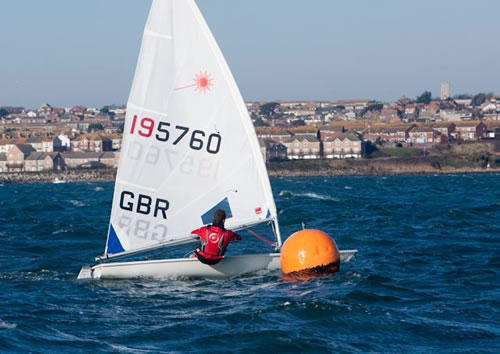
Taekwondo
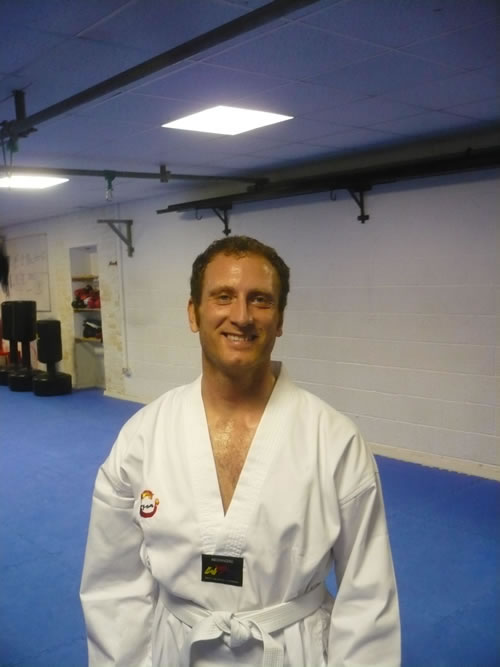
At the end of last year I tore my hamstring which was possibly the most painful experience of my life. I had to take six weeks out of training and it took a full three months to return to complete fitness. I am still trying to shift those last few kilos of “injury weight” (which I put on whilst not being able to train aerobically effectively).
I am extremely grateful to Liz at the Neilson Clinic (Physiotherapy in Weymouth) whom I saw every other day, for digging her elbows into my leg, and Jen at the Pilates Centre Weymouth whom I saw every day for stretching, for getting me back on track so soon. I was lucky that my injury didn’t cause me to miss any major events, although it would have been nice to have done a little bit of windsurfing over the winter as I had initially planned.
It is vital that this does not occur again. I therefore looked at ways to increase the flexibility and strength of my hamstrings (which are underused in sailing) to make sure this does not happen in the future.
When I think of people who are good at kicking (which requires good hamstring flexibility) one of the first sports I think of is martial arts. I am very lucky that it is possible to do Taekwondo some six times a week in Weymouth, with most of the training sessions within walking distance from my flat (so I really do not have much excuse not to go!)
The Master 5th Dan, Rob MacDonald, is passionate about the club which he has run since 1996. It is the only club in the area which is recognised in Korea and the World Taekwondo Federation and by the Olympics. Indeed the club can trace its lineage back to the founder of the first modern school of Taekwondo, Lee Won Kuk. They have an excellent website which is www.kickdorset.org
Taekwondo is not only helping my hamstrings (I know it is working as after my first Wednesday session I had extremely sore hamstrings) but the “patterns” are very good for my co-ordination which is great as I tend to be quite right side dominant. I also particularly enjoy the pad work as I feel it is much more productive to kick something “solid” rather than just thin area. Perhaps it will also toughen up my feet for hiking!
I am going to go to Taekwondo two/three times a week when I am in Weymouth. (At the time of writing I am just about to get on a plane from Gatwick to Nice. I do this route so many times I should be able to buy a season ticket!) My girlfriend Lady May also goes to Taekwondo so I can not miss too much or she will show me up.
Starting
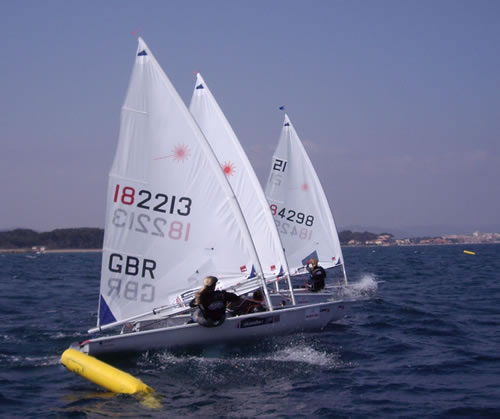
Starting is often quoted as 70% (or some other high figure) of the race. Whilst I can not see how you can derive an exact figure, it is certainly very important, especially in a fleet such as Lasers where at the top end there is very little difference in boat speed (everybody is fast!)
Being able to start consistently well is a key skill in today’s regattas as often there are very few discards, perhaps just one from the final series. So being a good starter is essential. If you have not raced for a while it is often worth going and doing some practice regattas before your more important championships so as to get some starting practice.
There are three elements to starting. The first is speed. You need to be able to accelerate as quickly as possible. This means having the rig set up correctly (you should practise sailing upwind first). In the Laser you would have the downhaul and the outhaul set, but leave some of the kicker off until just before the start to make the boat easy to manoeuvre. You need to be able to bear the boat away, sheet in and hike, before bringing the boat up to close hauled at full speed.
The second element is positioning. This is not only positioning yourself at the right end of the line considering the bias, the way you wish to go up the first beat and where your nearest competitors are starting, but also how you position yourself relative to the boats around you. You need a space big enough so you can easily accelerate the boat but not too big so that another boat can get in the gap! If you keep your bow down too low when someone comes underneath you, you could get pushed over the line, but if you sit close hauled someone can slot in very closely underneath you, giving you no room to accelerate into.
Lastly there is timing. How quickly are you drifting down the line is especially important if you are waiting for a gap to appear by the committee boat or if you are getting close to the pin end! Also how much time does it take to accelerate the boat? You do not want to get rolled by the boats around you, but you definitely don’t want to be OCS… so a few practice runs are well worth doing, as the more difficult the conditions the longer it can take to get up to full speed.
The London Boathshow
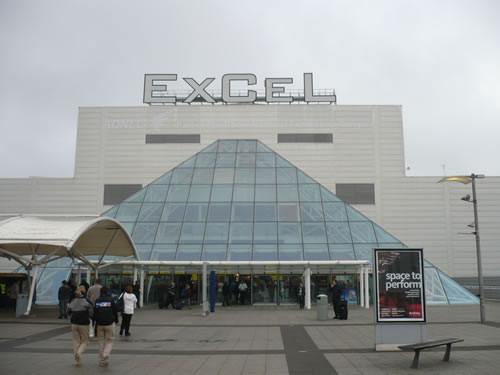
Well unfortunately the weather really didn’t help the turn out for the London Boat Show. When the news says, “Don’t travel unless you have to,” they really ought to say, “but you have to go to the Boat Show”!
This year I was giving my “Be Your Own Sailing Coach” talk in front of a huge 60 foot screen all microphoned up like Madonna and there seemed to be cameras and lights everywhere!
It was certainly different from my usual club based sessions which tend to be around a couple of hours (usually with a beer break somewhere in the middle) and with just 25 minutes to talk I really felt I could have said a lot more…
With such a limited time I had to choose my topic carefully and I decided to go for starting. Although hard to quantify, this is a very important part of the race. My aim was to go through approximately twenty slides (one a minute), taken from my book, but in the end I got only about half way through the material I thought I could use. Perhaps next time they might give me an hour!!!
Jon Emmett has over 20 years of coaching experience from grass roots to Olympic Gold.
